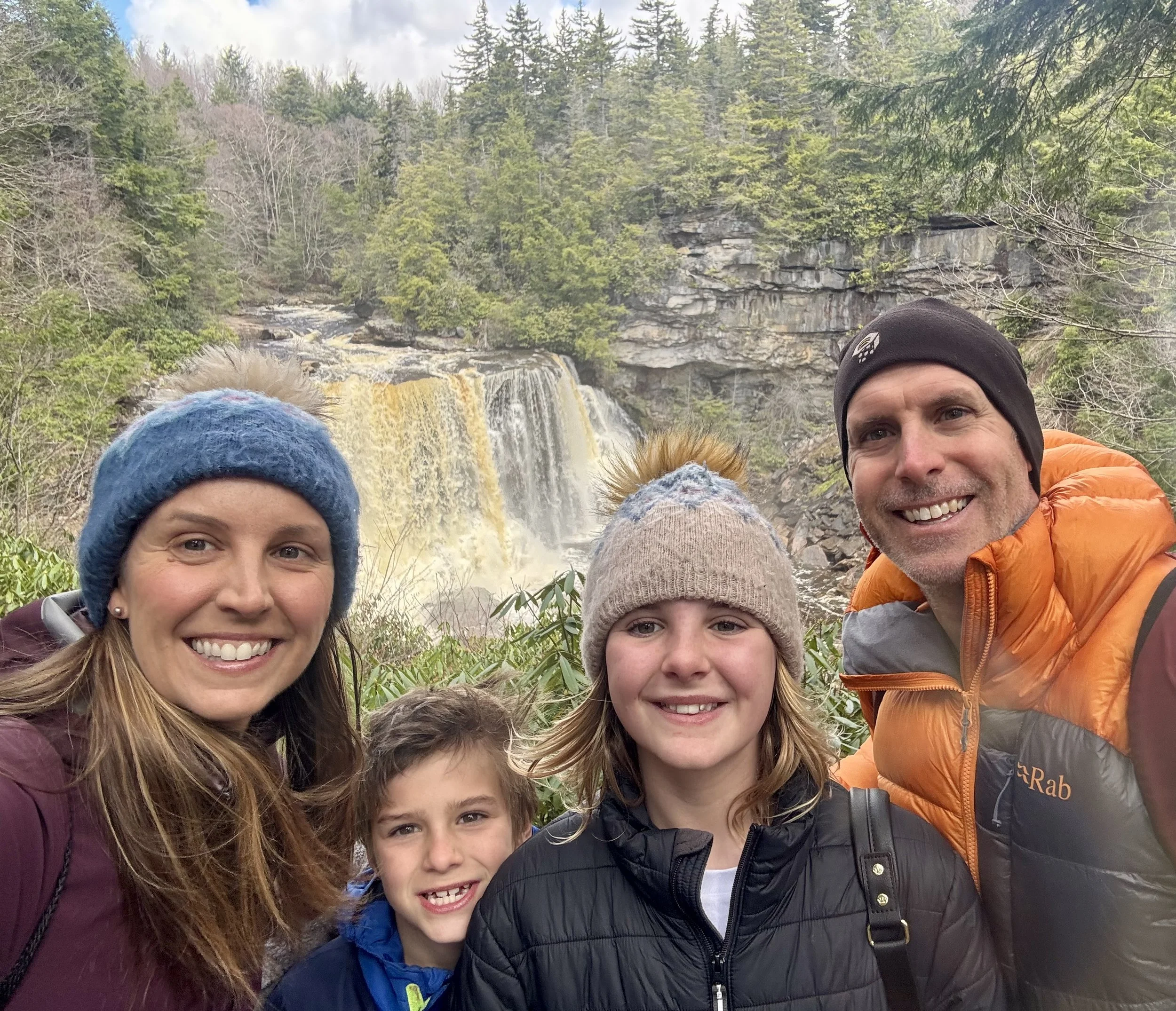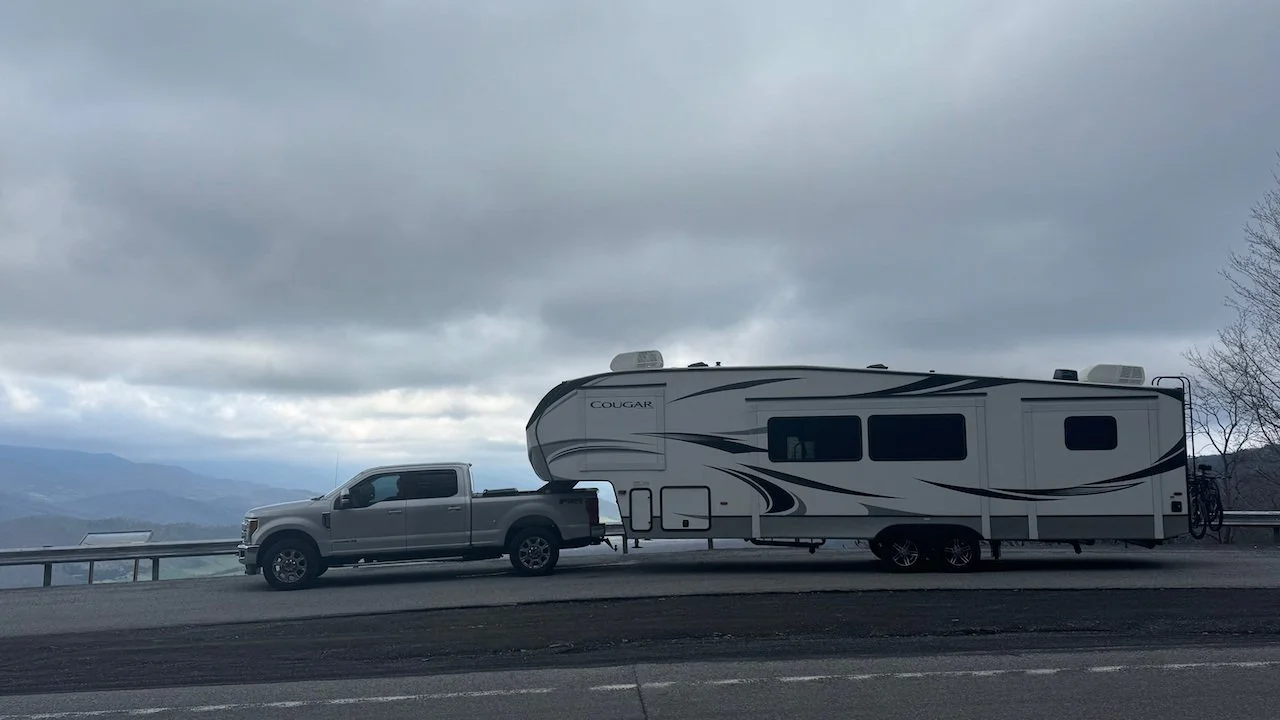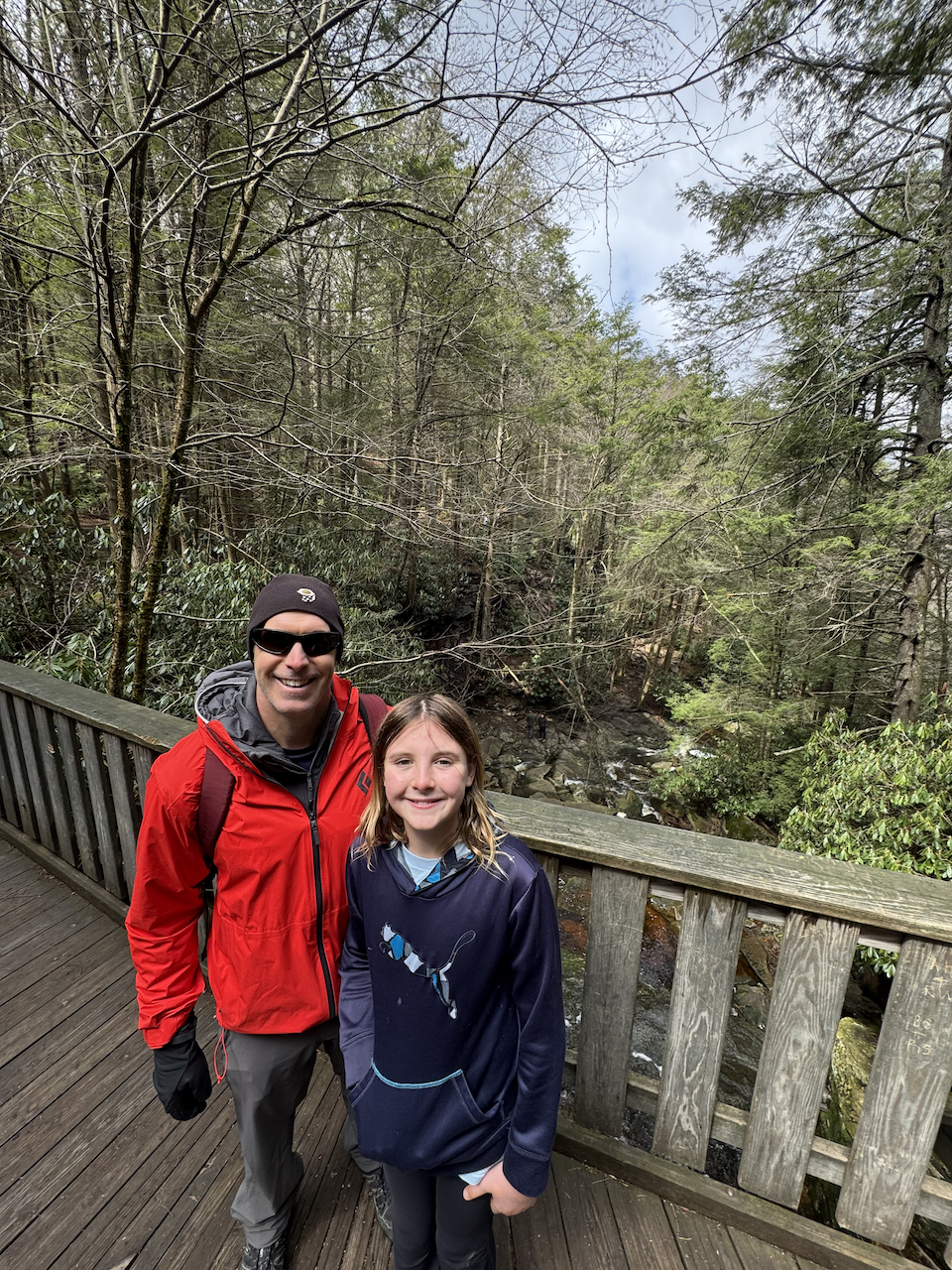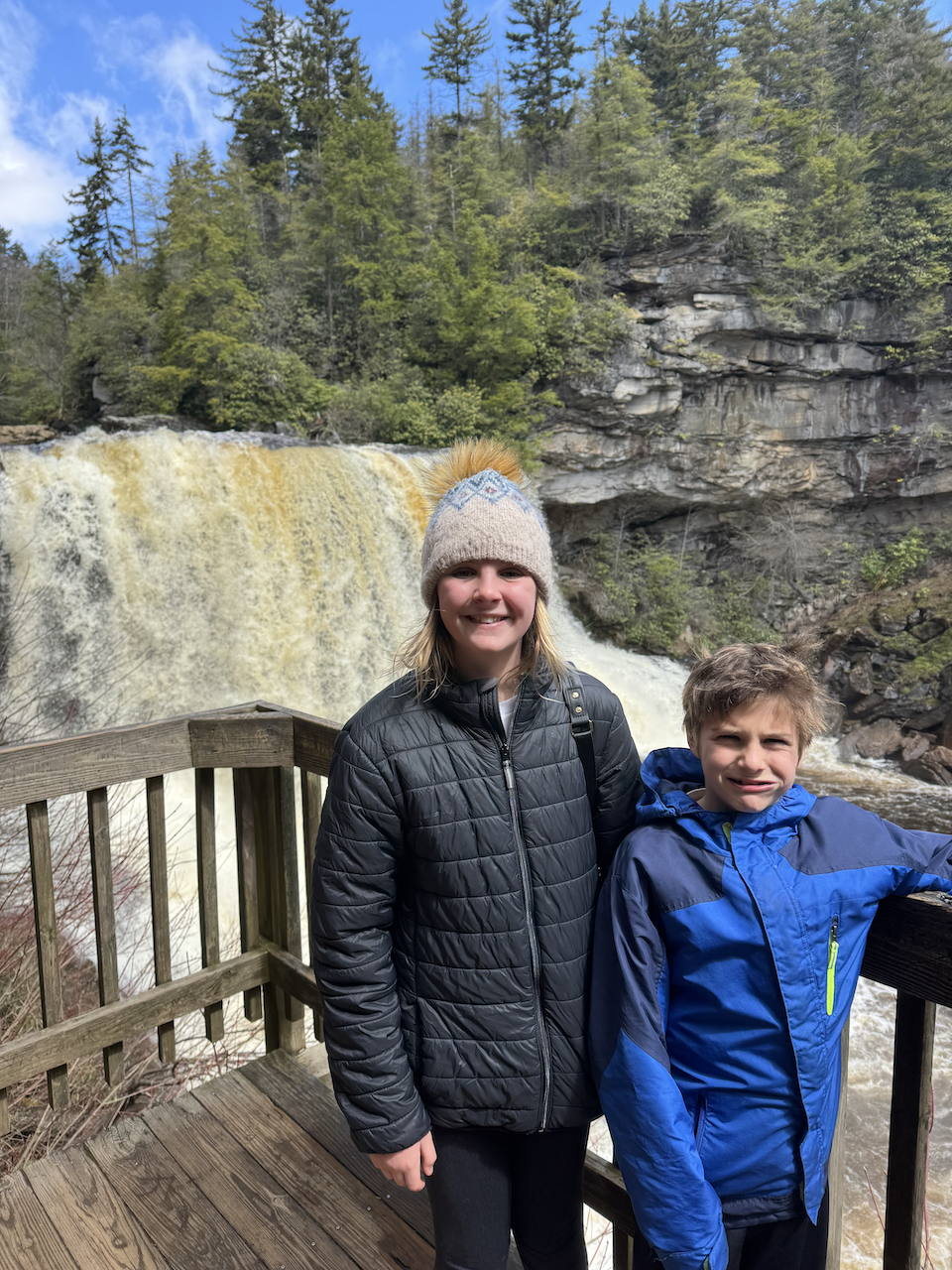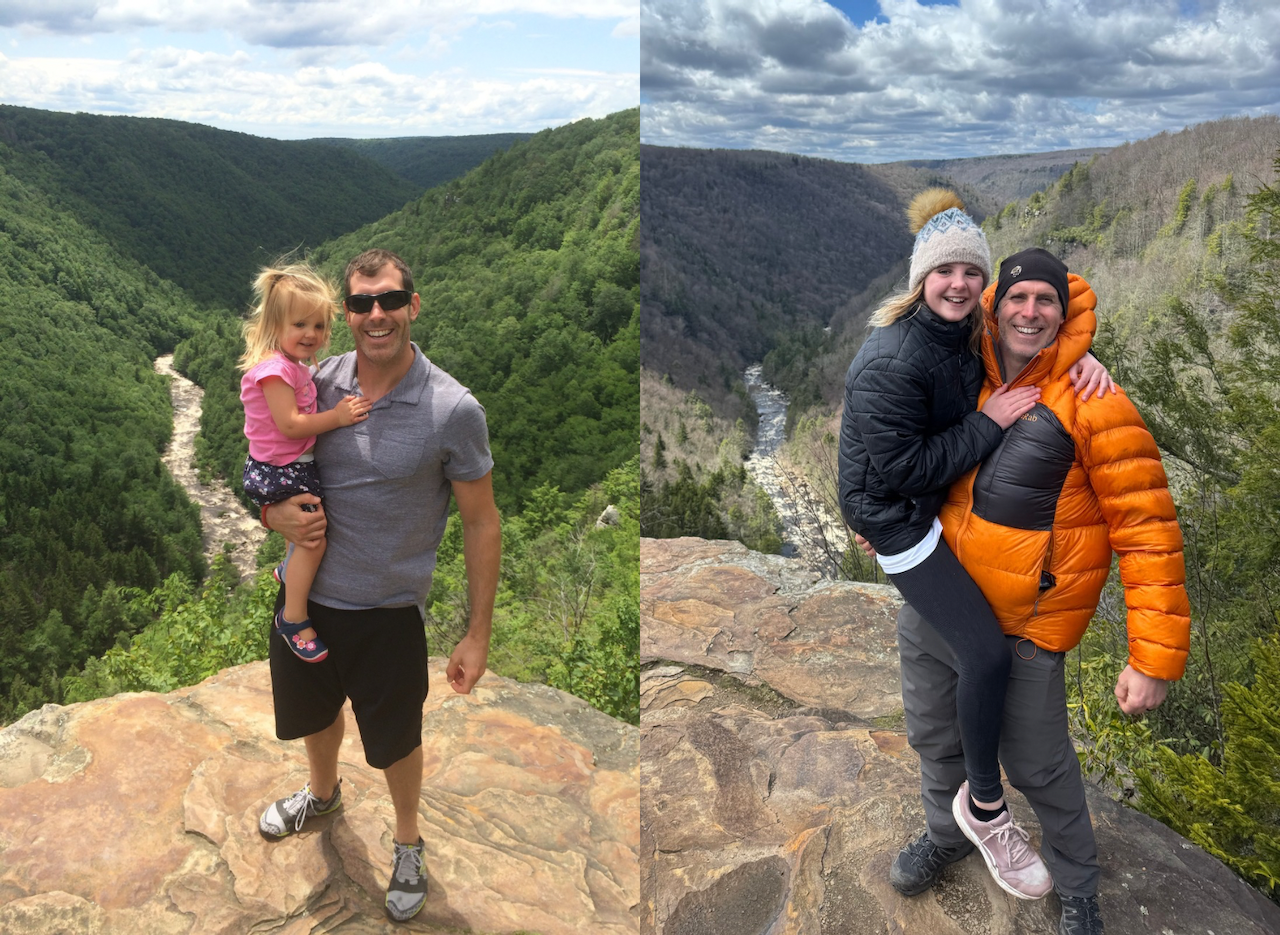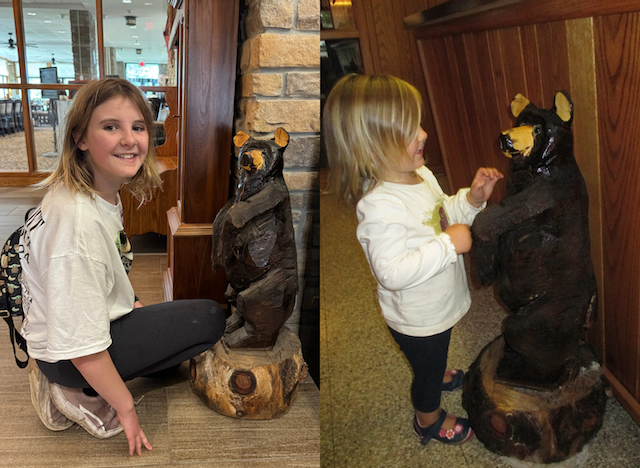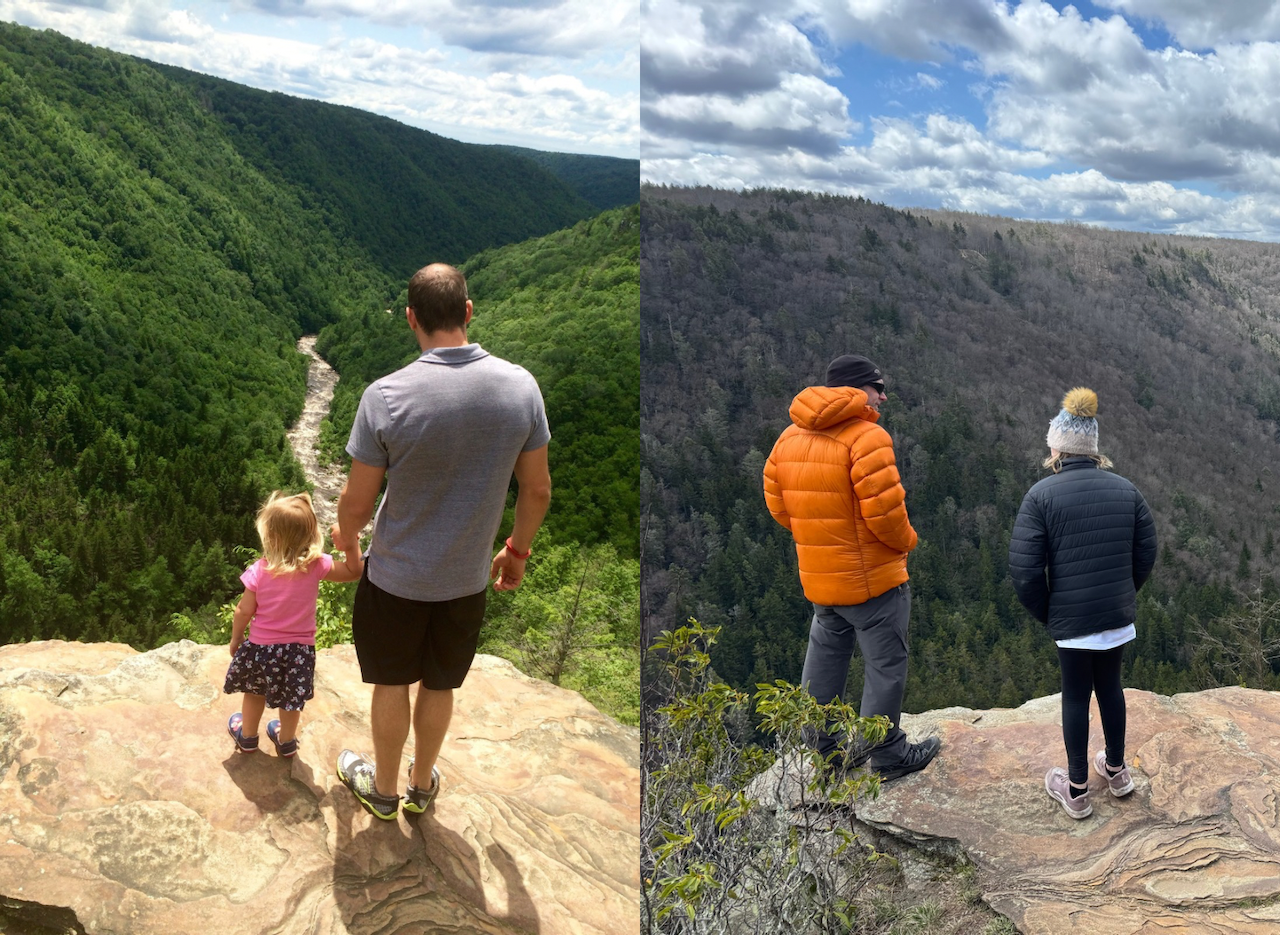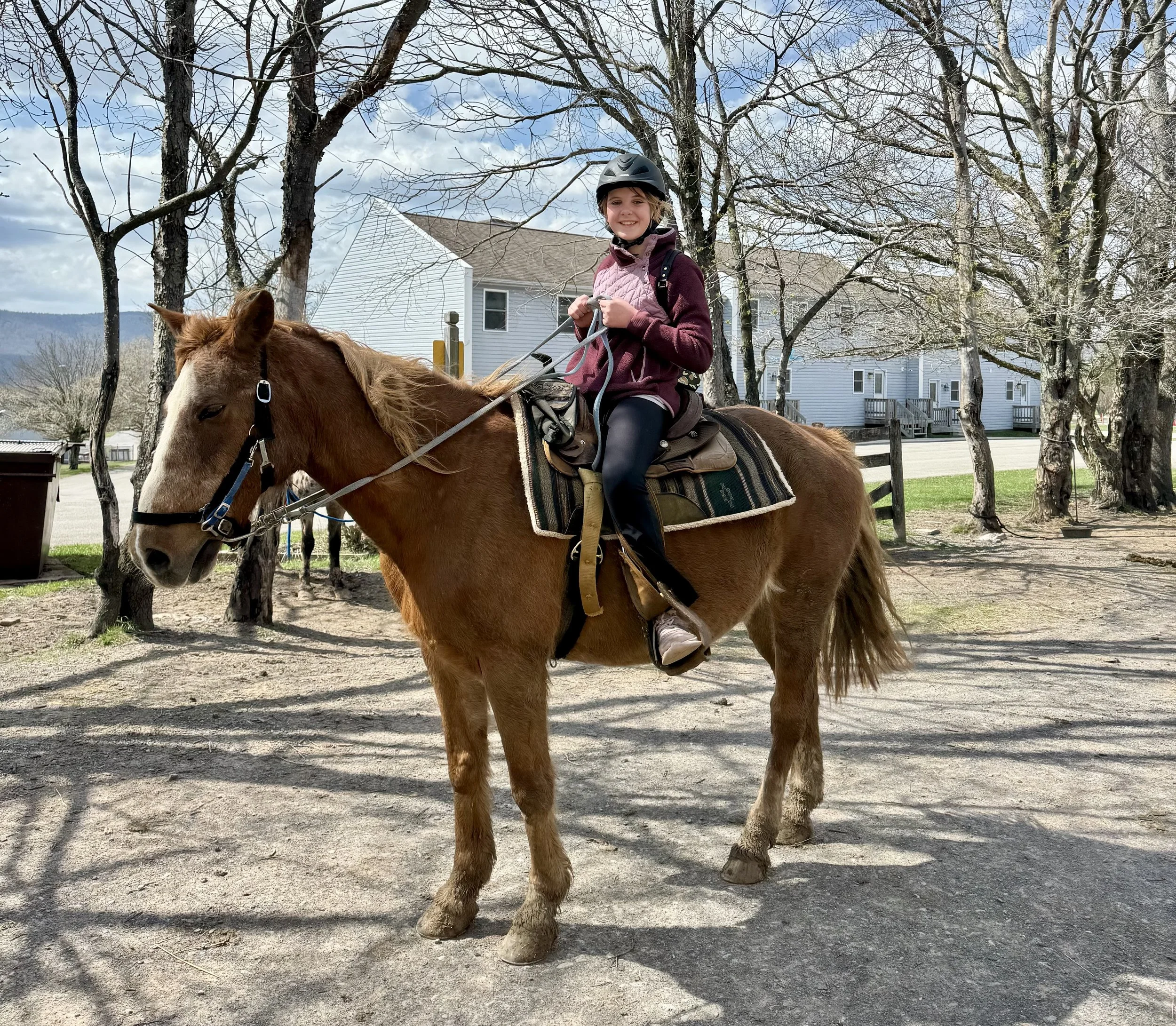The Mountain Test
We thought we were testing the rig—but the rig was testing us.
April 12 - 17, 2025
Canaan Valley, West Virginia; Blackwater Falls State Park
Blackwater Falls, West Virginia
Before heading west for an entire year, one big test remained for our truck and trailer: The mountain test.
During winter break the truck passed the road test, pulling the rig with ease up and down the Mid-Atlantic East Coast. But so far, our travels had been on flat terrain at sea level or very close to it.
And in addition, Nick spent a weekend in March upgrading the RV’s brakes, installing hydraulic brakes (superior to standard RV brakes). We wanted to test the new brakes, along with the new water filtration system Nick installed at the kitchen sink. So we looked to the mountains as our destination for the kids’ spring break.
Return to Canaan Valley
In 2015, shortly after our daughter, Sadie, turned two, Nick and I took her to the mountains of West Virginia for a long summer weekend. When you live in a beach town, trips to the mountains are the best way to get a change of scenery and cooler temps.
This little pocket of mountain towns in Canaan Valley, WV, has two state parks just 20 minutes apart. Canaan Valley is a ski resort with a large lodge and amenities that stay open year round. Blackwater Falls State Park has more rugged amenities but lots of waterfalls and hiking trails along the picturesque Blackwater River, which cuts through the mountains, to breathtaking effect.
Blackwater Falls, 2015
Sadie’s first time on a horse
Ten years ago, Nick, Sadie and I spent three days in the Canaan Valley area hiking to waterfalls, swimming in the pool, and taking the ski lift up to the top of the mountain and hiking back down. Little Sadie had just turned two.
In the past 10 years I’ve wanted to repeat this trip with our bigger kids, but between work schedules, PTO priorities, and our move to California and back, we haven’t had the chance. Mountain testing the rig was the perfect opportunity to return. I booked a campsite at Canaan Valley Resort State Park with one central goal: to mountain test our rig.
Here we go…
We left Virginia Beach on a sunny spring Saturday in April a week before Easter—later in the day than planned. I completely underestimated how long it would take to make/clean up breakfast and lunch and transfer a week’s worth of groceries from our kitchen to the RV fridge/pantry. By the time we got all that buttoned up, it was close to 11 a.m. when we finally pulled away from our cul de sac to start the 300-mile drive.
The first four hours sent us west on easy freeway (got to skip I-95!). We exited at Harrisonburg, VA and headed to the mountain pass through the George Washington National Forest. That’s when the real test began.
Winding up and down through the mountain pass, we crossed into West Virginia with another hour of elevation gains and drops still to go. The rig was pulling just fine, and the brakes were appropriately responsive on the steep downhill grades. After a day of driving, so far the trip was going smoothly—or so we thought.
When going west went south
We arrived at Canaan Valley State Park around 6 p.m. I turned on the spigot at our campsite to test it, and a small stream came out confirming water was working. So I turned it off, and we started setting up. We disconnected from the truck, and Nick began hooking up utilities.
Once the water was hooked up, I turned on the faucet at the kitchen sink. But nothing came out.
This is the moment we discovered the park had not yet turned water back on after the winter. (Perhaps a clue might have been that the 50-site park had two other RVs in it). The website said water was off from October - April. It was April 12th. I guess my beach brain wasn’t factoring in that sub-freezing temps were still possible in the mountains mid-April.
So, the little trickle I had seen was exactly that—a little trickle. But NOT a full water supply. That discovery put us in the mountains at about 4,500 feet in elevation for five days of spring break with no water. And I mean zero water. None.
Because we had planned to test the new water filtration system, we didn’t bring any jugs of drinking water with us like we had on every other RV trip. That was the whole point of the new system—not having to buy and carry water, creating extra weight to haul, extra plastic to toss, and one more thing to monitor and plan for.
Faced with the prospect of no water, we weighed our options. We could:
pack up/hook up and drive somewhere to fill our tanks with a hose (another hour of setting up as the sun was setting).
drive down the mountain to one of the RV parks we passed an hour back (but it was getting dark and our calls to their office weren’t going through to check for availability)
head to the lodge and get enough water to make it through the night (or spend the night there if we got desperate). While there we could also see if someone could turn the water on.
We opted for the third choice. Get through the night. One of the meals I had planned to make for dinner didn’t require any water (chicken fajita bowls). So I made dinner quickly and fed everyone while Nick troubleshooted the water situation. He hooked up the hose to our holding tank—a tank we’d never used—to see if the trickle would fill it.
After dinner we loaded up the truck with every water bottle we had and drove the short distance to the lodge. And that’s when a bad hour of vacation got worse.
“Oh no,” Nick said, his eyes shifting from road to dashboard.
“What’s wrong?” I asked.
“The transmission light is on.” He pushed aside a note card with a Bible verse that rested on the dash. “It was underneath this. I have no idea how long it’s been on.”
I felt my pulse increase and my chest tighten. Our first day driving in the mountains and already the truck’s engine was in distress. The questions started racing through my mind. If the truck can’t handle climbing to 4,500 feet, how we will get through the Rockies? The Sierras? And more immediately, how would we get our 11,000 lb. rig safely back down the mountain to a repair shop without a fully functioning tow vehicle? And if we needed to stay put at our site until we figured it all out, how would we do so without water?
Not knowing what else to do, we continued on with our plan to fill up water bottles at the lodge. With every Nalgene and Stanley filled and a phone call to the campground manager requesting the water get turned on, we drove our broken truck back to our water-less trailer feeling incredibly defeated on day 1 of our mountain test.
In that moment, I kept reminding myself, sending up prayers of gratitude, that technically we were fine. We were safe. We were healthy. We were together. One thought that comforted us was that after all that mountain towing, the truck showed no physical signs of slowing or distress.
The next right step was sleep. We could figure out the rest tomorrow.
The turning point
Back inside the trailer, Nick turned on the faucet at the kitchen sink. To our complete relief, water came pouring out (!). The small trickle from the hose had built up enough to create a sufficient water source from the tank. Enough for washing hands, showering, and trying out the drinking water filtration system (!). One problem appeared to be solved, ironically thanks to the spigot at our exact site having a small leak (two broken things = a fixed thing?).
But while the water was the more urgent problem, it was, admittedly, the more easily solvable one. We could have hitched up and filled tanks. We could have bought water at a convenience store. We could have waved the white flag and stayed at the lodge (though I’m unable to imagine the universe where Nick would have conceded this level of camping defeat).
The truck’s transmission was a much bigger (and likely costlier) fix. Not to mention the logistics of towing our 11,000 lb rig down the mountain with an unwilling tow vehicle. While I got the kids settled for bed, Nick returned to the truck to study the manual and Google some answers. About 30 minutes later, he showed up with the best words.
“Good news,” he said. “It’s not the transmission light. It’s a check engine light, probably for an emissions sensor that usually needs to be replaced around 120,000 miles. We’re at 121,000 miles.”
So, the transmission was fine. Suddenly we had water in the tank and a working tow vehicle. The relief, y’all!
After one very stressful hour on day one of spring break, we woke up on day two with a full tank of water and a simple emissions sensor requesting to be replaced—which could wait until we were home. One bad hour wrapped up peacefully thanks to a little trickle of water and a Google search.
Let the fun begin!
**********************************
Happily, the rest of our trip to West Virginia was relatively uneventful—or rather, filled with the desired kind of eventfulness for spring break. We hiked, biked, and did our first horseback riding trip as a family at the same place where Sadie had her first-ever horseback ride.
Our last morning at the park, temps dropped down to the upper 20s—presumably the last freeze of the season. The sun came out while we were packing up, and as soon as temps rose above freezing, the campsite’s water was fully turned on. We were able to empty tanks and clean everything up at our site. A pretty sweet surprise ending considering how the week began.
Now and then
As we returned to some of the same hikes, overlooks, and lodges that we went to in 2015, I realized these would make some fun side-by-side pics of Sadie at age 2 and, now, almost 12. I paired the photos on the drive back. I was not prepared for the results:
Somehow ten years doesn’t feel that long ago. And in that time, our little girl has turned into a little lady.
We cannot stop time. But we can jump off the wild carousel of school and work routines to spend more time together now. Staring at these photos, I remember feeling so grateful to already have this as our plan.
Home Again
Inspection by our in-house mechanic
Five days after we arrived in West Virginia, we traveled the six hours over the mountains, down the freeway, back to Virginia Beach. Nick borrowed an error code reader from a neighbor, which confirmed that a MAP sensor needed to be replaced—a $15 part.
With great brakes and steady towing, the truck passed the mountain test (phew!). Considering everything to come, having the chance to test drive our problem-solving skills was an unexpected bonus.
All smiles on Easter Sunday, two months away from the Big Trip.
*************************************
For those just finding us, hello! Inspired by the Year of Jubilee in Leviticus 25, our family is embarking on a yearlong RV road trip in 2025 to celebrate my husband’s retirement from 20 years in Naval Special Warfare. We hope to reset and reflect before civilian life begins.
Sign up below to receive updates, along with stories and reflections from 24 years of wartime military service. We look forward to keeping in touch on this epic adventure.
To join the Road Trip email list, please fill out this short form. We promise no spam ever. This is an AI-free zone. Any typos/mistakes are my own :)
For background info on who we are and where we’re traveling, we’d love for you to read the intro post.
